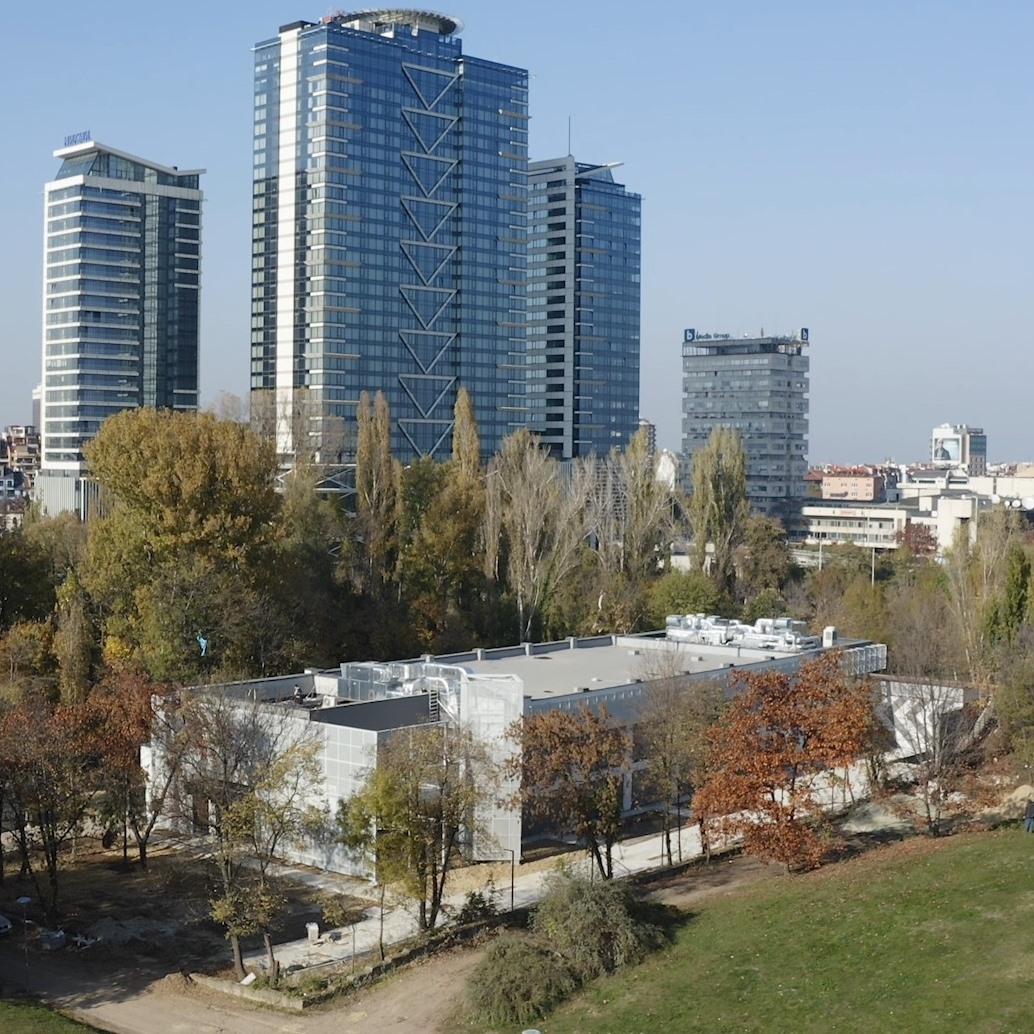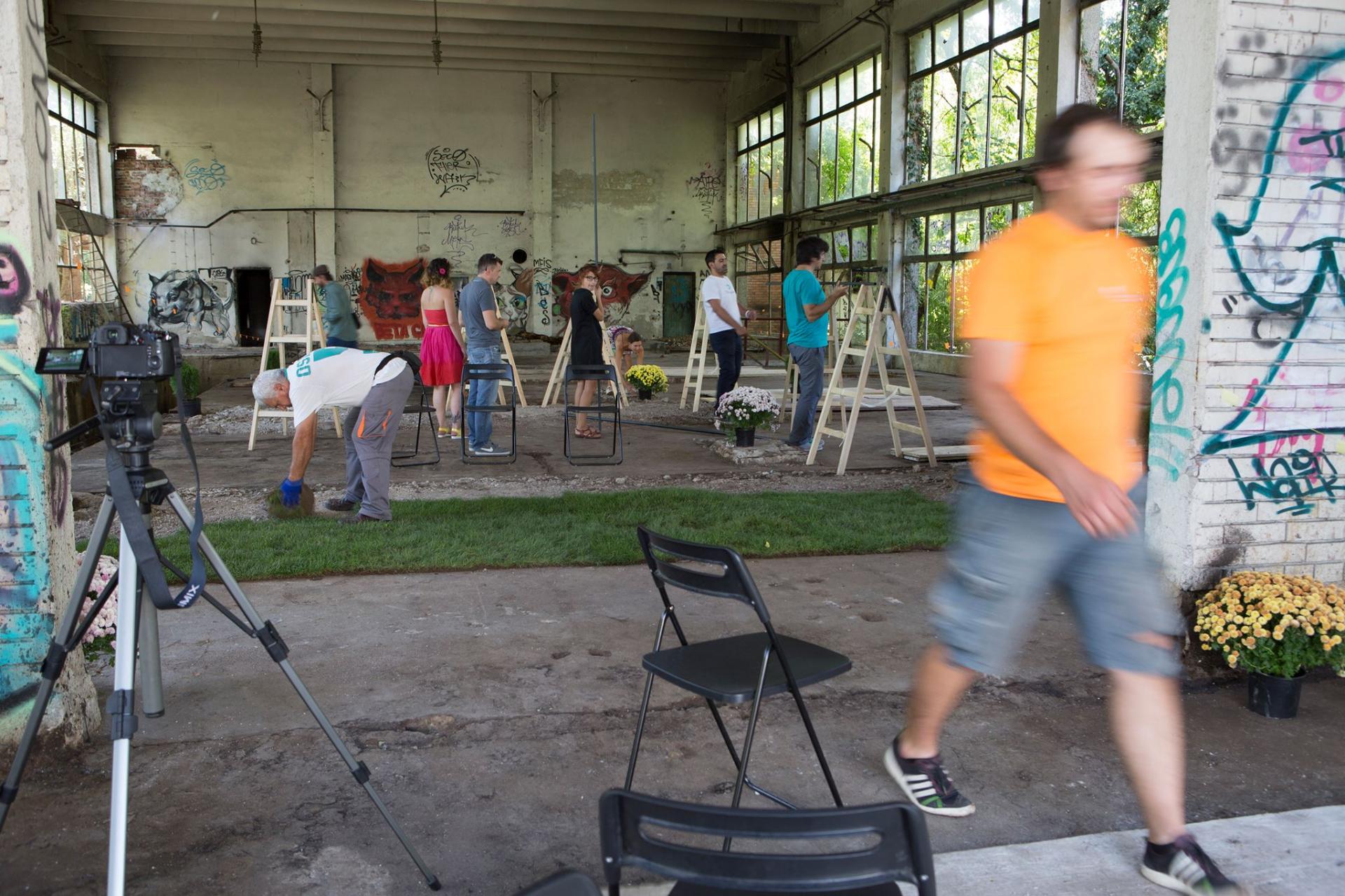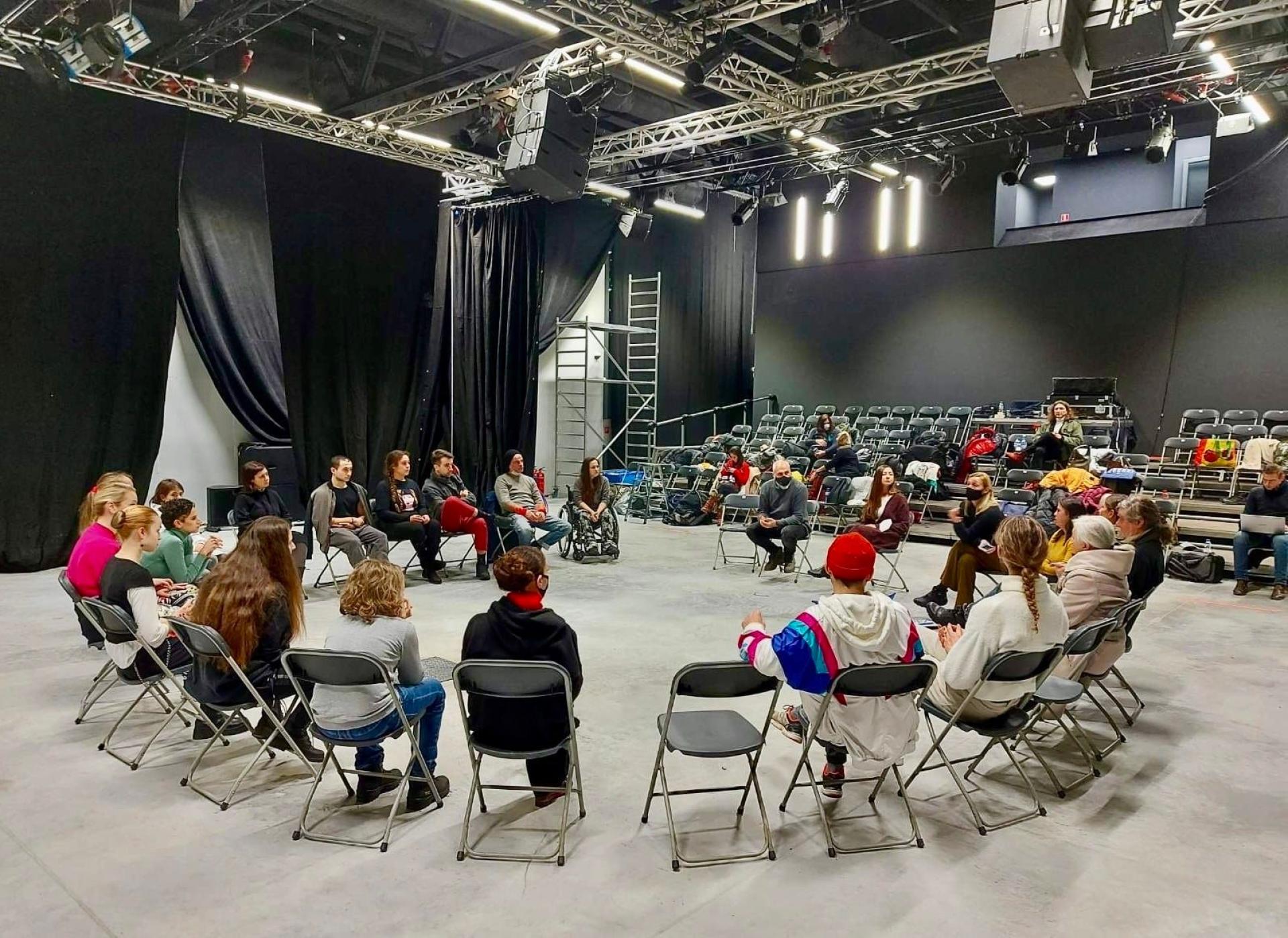A Change That Can Be Believed In
Basic information
Project Title
Full project title
Category
Project Description
It was a former industrial facility providing heating to the pride of the old regime that was once the biggest congressional center in the Balkans. Now it is the shiny new center for contemporary arts called Toplocentrala that warms the hearts of independent artists and companies in Sofia and beyond. The City of Sofia responded creatively and acted decisively to bring a welcome change to an urban environment, improve the quality of life of many and give a good example to everyone.
Geographical Scope
Project Region
Urban or rural issues
Physical or other transformations
EU Programme or fund
Which funds
Description of the project
Summary
Inspired by the best in Europe, Toplocentrala is an example of adaptive reuse architecture turning an abandoned industrial facility into a new cultural & social
venue - center for contemporary arts – intended to have diverse, relevant to the current social dynamic and community-sensitive program of events and activities.
The inspiration came from the fledgling independent arts community in the country – artists and companies working outside the established cultural structures – who even as a group tend to be open, engaged, and responsive to social issues. And who was also able to drum up support from the European art community. Toplocentrala was later to become a member of Trans Europe Halles, a network of grassroots cultural hubs.
The City of Sofia responded. In 2014 it started a public consultation process with stakeholders and the first thing was together to pick out a location. Then it made an international open call for architectural projects looking for projects of a building that:
- Should serve an active social and cultural space in Sofia city center
- To serve a cultural center with a wide variety of activities – from all kinds of contemporary arts to social and educational programs
- To become an integral part of the surrounding green park space
- To facilitate a regenerative effect on the immediate neighborhood
- To have its own identity and be visually recognizable while keeping continuity with the former identity of the facility. What we now have is 5 million BGN City of Sofia public money well invested in a beautiful new venue that the sector can rave about and which has brought an immediate positive impact on local neighborhood and urban environment.
Key objectives for sustainability
Inspired by the best European contemporary art centers, Toplocentrala is an example of adaptive reuse architecture as it has given a completely new life and purpose to an abandoned industrial facility by turning it into a center for contemporary arts.
The inspiration came from the fledgling independent arts community in the country – artists and companies working outside the established cultural structures – who practically cared for the need of free artists to be able to express themselves and have the proper material conditions to do that. And who also tend to be open, engaged, and responsive to the social burning issues.
The City of Sofia responded. In 2014 they have identified and short-listed 5 locations in the city that – by some transformation – could turn into a cultural center that the independent sector craved for. It has also started a public consultation process with stakeholders. That coincided with the General meeting of IETM in Sofia hosted by the Association of Independent Theatre – one of the initiators. So, a timely boost to the cause was given by advocacy from the international community. Toplocentrala also became a member of Trans Europe Halles, a network of grassroots cultural hubs.
In the process ending with choosing the present-day location of Toplocentrala, in the 2017 City of Sofia made an international open call for architectural projects. It looked for projects of a building that:
- Should serve an active social and cultural space in Sofia city center
- To serve a cultural center with a wide variety of activities – from all kinds of contemporary arts to social and educational programs
- To become an integral part of the surrounding green park space
- To facilitate a regenerative effect on the immediate neighborhood
- To have its own identity and be visually recognizable while keeping continuity with the former identity of the facility
Key objectives for aesthetics and quality
By repurposing an existing structure for new use Toplocentrala aims to give Bulgarian cultural institutes an excellent model for designing an artistic space and improving the quality of experience, especially by integrating the cultural facility into the surrounding green park area.
An international open call for architectural projects was made by the City of Sofia for the reconstruction of the old facility and converting it to a cultural center. Three key criteria beyond functionality were set – an active social and cultural space (1) with a diverse program of contemporary arts and social and educational activities (2) integrated smoothly and fully into the surrounding park area (3).
61 projects were made and applied by architects based in Bulgaria, the UK, Italy, Spain, France, Germany, Poland, and Switzerland. A 9-member international jury was appointed. The jury was well balanced in terms of diversity and representation of public interest, stakeholders, and professionals. It included 2 representatives of City
of Sofia, 3 international experts involved with similar European centers – two of whom architects and one – a director of a similar center in Nantes, 2 Bulgarian independent architects, and 2 representatives of the civic initiative, one of whom an architect himself.
The regenerated built environment is connected to local cultural dynamics, so it transforms the community involved in the artistic process led by Toplocentrala’s program. This is an example of a collective action, initiated from the grassroots level to effect change at the local, regional, national or international level.
Key objectives for inclusion
In 2014 The City of Sofia was already convinced that public investment was necessary to respond to a pressing need of the independent cultural sector – mostly performing and stage arts – which for many years has been trying to get its message across to public authorities and the larger public.
Then Sofia Municipality did something that many have shirked doing before. They identified and short-listed five locations that met some feasibility criteria and invited stakeholders and the larger public to tour the five locations in person together with Municipality officials and then discuss and settle on what was deemed best. This public consultation process and citizen engagement went amazingly well.
The cause was given a timely boost with advocacy from the international community in the performing arts as the biggest European network IETM happened to have its General meeting in Sofia at that time. It also resulted in Toplocentrala becoming an associated member of Trans Europe Halles – the biggest network of grassroots cultural centers that once have been abandoned buildings.
Positive developments continued with the international open call for architectural projects in 2017 with the following key criteria the projects should meet:
- A building that should serve as an active social and cultural space in Sofia's city center.
- To serve a center with a wide variety of activities – from all kinds of contemporary arts to social and educational programs
- To become an integral part of the surrounding green park space
- To facilitate a regenerative effect on the immediate neighborhood
- To have its own identity and be visually recognizable while keeping continuity with the former identity of the facility
Results in relation to category
Here follows a list of results and impacts:
- public consultation process and citizen engagement
- An international open call for architectural projects was conducted with a jury composed of international experts and local stakeholder representatives.
- Five million BGN City of Sofia public money was invested in the project
- Beautiful new venue – that the sector can rave about
- That has brought an immediate positive impact on local neighborhoods and the urban environment.
How Citizens benefit
The independent cultural sector in Bulgaria – artists and companies mostly centered in Sofia and larger urban areas – that work outside of the cultural network functioning on public sustenance has been the main contributor towards this project. They have been putting over the idea to authorities that more spaces for culture and the arts – that are accessible and open to contemporary life and its dynamics are needed.
Their communications and advocacy efforts started to bear fruit in 2014 when the City of Sofia embraced the cause and looked prepared to spend public money for it. Sofia Municipality also identified and short-listed five locations that met some feasibility criteria and invited stakeholders and the larger public to tour the five locations in person together with Municipality officials and then discuss and settle on what was deemed best. This public consultation process and citizen engagement went amazingly well. The cause was given a timely boost with advocacy from the international community in the performing arts as the biggest European network IETM happened to have its General meeting in Sofia at that time. It also resulted in Toplocentrala becoming an associated member of Trans Europe Halles – the biggest network of grassroots cultural centers that have once been abandoned buildings across Europe.
The city of Sofia then made an international open call for architectural projects in 2017. A 9-member international jury was appointed consisting of experts in the field. The jury was well balanced in terms of diversity and representation of public interest, stakeholders, and professionals. It included 2 representatives of the City of Sofia, 3 international experts involved with similar European centers – two of whom architects and one – a director of a similar center in Nantes, 2 Bulgarian independent architects, and 2 representatives of the civic initiative, one of whom an architect himself.
Physical or other transformations
Innovative character
The project has significant importance and innovative potential for the local scene and society.
Why - because it has brought together local public authority and private sector and civil society in a constructive, open, and transparent process. And it has already brought results that all parties involved are satisfied with.
Post-communist Bulgaria has inherited a cultural infrastructure that has only been reduced and maintained for more than thirty years now. Private businesses have not seen fit to invest in such. The state and municipalities have either lacked resources and/or will. And suddenly we have the example of Toplocentrala that restores a sense of belonging in the arts community and is now very likely to be replicated elsewhere in Sofia and the country.
The success of this process has also brought on board the Ministry of Culture, which has made legal and financial arrangements to contribute to the funding of the future center for contemporary arts.
Learning transferred to other parties
We see Toplocentrala as a breakthrough project with great potential to be transferred to our country and beyond. We take pride in it and we believe we have set a good example to be followed by other cities in Bulgaria and beyond.
The success of this project has been greeted with a lot of joy and enthusiasm from the independent arts sector in the country. It is an everyday experience now that we meet or hear from people who wish us good and want to be involved. We struggle to respond. It is another factual indication that the project has a great potential for being replicated.
Ministry of Culture has also jumped on board and has pledged (and delivered) funding.
A working group has started gathering on the next 10-year strategy for culture for the City of Sofia (2023-2033) and words have been said about having more venues in Sofia like Toplocentrala.



